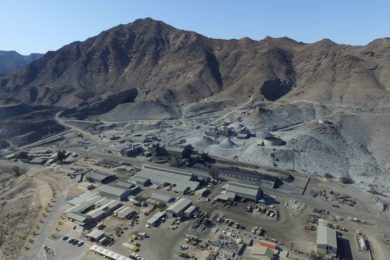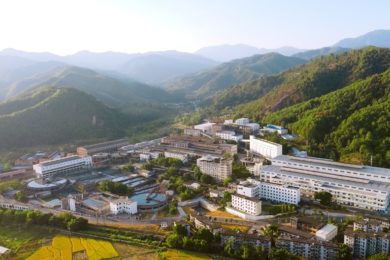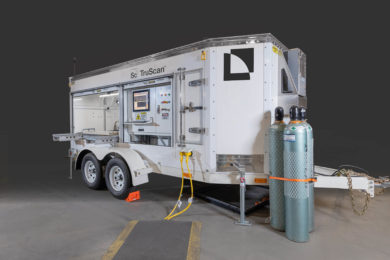Trevali Mining has reported positive results from the NI43-101 Pre-Feasibility Study at its 90%-owned Rosh Pinah zinc-lead-silver mine in Namibia. The PFS is based on a scenario to expand the current throughput from 0.7 Mt/y to 1.3 Mt/y through the modification of the processing plant, construction of a paste fill plant, and development of a dedicated portal and ramp to the WF3 deposit. Prior to making an investment decision the company intends to commence a Feasibility Study of the RP2.0 expansion in the first quarter of 2021.
The PFS incorporates an upgrade to the comminution circuit to include a new single stage SAG mill and pebble crusher. The upgrade also includes primary crushing upgrades, an ore blending system, along with other circuit modifications to provide increased flotation, thickening, filtration and pumping capacity to achieve the target throughput of 1.3 Mt/y. The upgrade will also include several flowsheet modifications aimed at improving both the concentrate grade and metal recoveries.
A dedicated portal and decline to the WF3 deposit will be constructed to support the increase to mine production levels and reduce operating costs. The trucking decline is 3.9 km in length, excluding level access and stockpiles. For construction purposes, the decline is separated into five independent legs to enable concurrent development and reduce overall construction time. Internal legs of the trucking decline will be developed off existing development, with take-off positions selected to minimize interaction with the underground operation.
The new trucking decline will act as an additional fresh air intake within the ventilation network and will enable direct ore haulage from the WF3 zone to a new surface primary crusher station utilising large-scale (60 t) trucks. Ore sourced from other areas (EOF, SF3, SOF, and BME) will be transported to the existing underground crushing system using the existing 30 tonne truck fleet and conveyed to surface via the existing conveying system.
A paste fill plant has been included to modify the mining method which improves both the safety conditions and economics of the mine. Paste filling the stopes rather that leaving them void will improve ground stability, increase ore recovery, and reduce dilution. It will also reduce surface tailings as a portion of new and existing tailings will be redirected underground to be used as paste fill.
The existing small-scale underground trucks and load-haul-dump (LHD) fleet will continue to be used primarily in the current mining areas. This will reduce capital expenditure associated with purchasing new mobile equipment, increasing development profiles and changing the existing underground crushing and conveying system. As mining extends deeper and average haulage distances increase in WF3, new large-scale trucks and LHDs will be purchased for the more efficient transportation of material to surface reducing costs over the life-of-mine.
Once the project is commissioned, onsite operating costs are expected to reduce by approximately 28% on a per tonne milled basis. Mining costs per tonne milled will be reduced due to the change in the mining method to include paste fill allowing for increased ore recovery and reduced mining dilution. Mining costs will also benefit from the dedicated underground decline to the WF3 deposit which will allow for more efficient material handling and reduced cycle times. Except for power, the processing unit costs will decrease as a result of treating increased tonnages following the upgrade. Fixed on site costs on a per tonne milled basis will also decrease as the mine ramps up from 0.7 Mt/y to the PFS target of 1.3 Mt/y as a function of higher annual throughput.
The company intends to commence a Feasibility Study of the RP2.0 expansion in the first quarter of 2021. Prior to such commencement, there are several additional optimisation opportunities that are being pursued that have the potential to enhance the project’s economics further. The key opportunities are listed below:
- Optimisation of critical underground infrastructure placement including the positioning of the decline and the ventilation, electrical substation, and paste fill distribution networks, which may reduce mine design physicals and lower capital and operating costs.
- There is potential for lead recovery improvement with the inclusion of a Jameson flotation cell in a cleaner scalper flotation duty.
- Inferred Mineral Resources have the potential to be converted to Indicated and Measured Mineral Resources via additional infill drilling work and enable additional higher-value ore (above the strategic optimal cut-off value of $80/t NSR) to displace lower-value ore earlier in the mine schedule thereby improving NPV.
- Significant exploration potential exists within the property with a number of high priority drill targets identified to delineate additional Mineral Resources.










